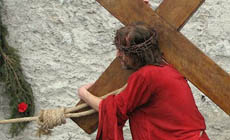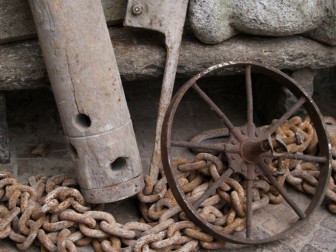Breno
Breno is overlooked by the remains of the medieval Castle built around the year 1000 on the high point that has been inhabited since Neolithic times. Ancient finds indicate that this is not only the oldest inhabited place in the valley but in all the Lombardy Alps. In Breno’s centre, the Renaissance church of Sant’Antonio is decorated with frescoes by Romanino while the Parish church has paintings by Moretto, another Brescian master of the 16th century. The history of the village and the valley is described in the Camonic Civic Museum where hundreds of objects, paintings, prints, manuscripts and statues are displayed.
Cerveno

Standing under one of the most beautiful mountains in the valley, the Concarena, Cerveno guards, in the Parish church, a major example of art and popular faith in all of the Alps: the 14 chapels of “The Way of the Cross” in which around 200 full-size statues tell the story of Christ’s Passion. Most of the statues, realistic and even grotesque, were the work of Beniamino Simoni who completed the work on 11 of the stations (1752-1761).
The others were sculpted by Donato and Grazioso Fantoni (1764) and Giovanni Sleroni (1869).
Scultori e artigiani
 Arts and crafts: sculpting and inlaying wood are ancient traditions in this valley as shown in the altars, chancels and statues that embellish the churches, but also in workshops which still today produce objects and furniture made with great skill (see “Handcrafts”). Valley woodworking skills were particularly renowned between the 15th and 18th centuries with works by the Ramus family of Edolo and Fantoni being their greatest exponents. The most beautiful works are to be found in the higher part of the valley: Edolo, Monno, Incudine, Stadolina, Canè, Ponte di Legno and Precasaglio.
Arts and crafts: sculpting and inlaying wood are ancient traditions in this valley as shown in the altars, chancels and statues that embellish the churches, but also in workshops which still today produce objects and furniture made with great skill (see “Handcrafts”). Valley woodworking skills were particularly renowned between the 15th and 18th centuries with works by the Ramus family of Edolo and Fantoni being their greatest exponents. The most beautiful works are to be found in the higher part of the valley: Edolo, Monno, Incudine, Stadolina, Canè, Ponte di Legno and Precasaglio.
Photo: Maurizio Zanetti
